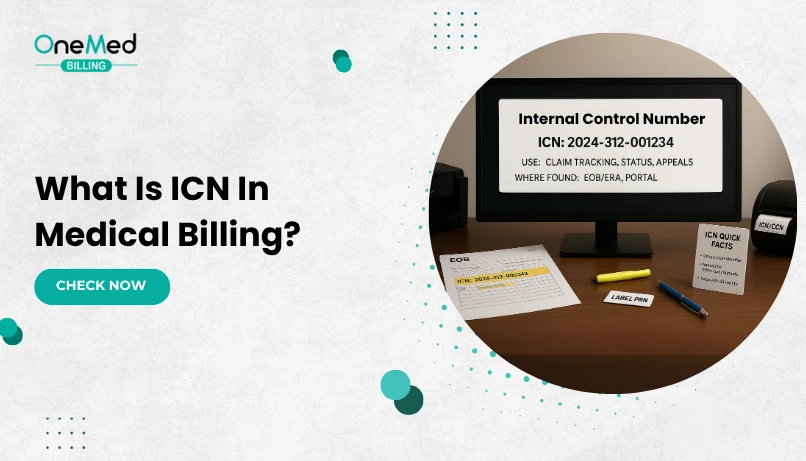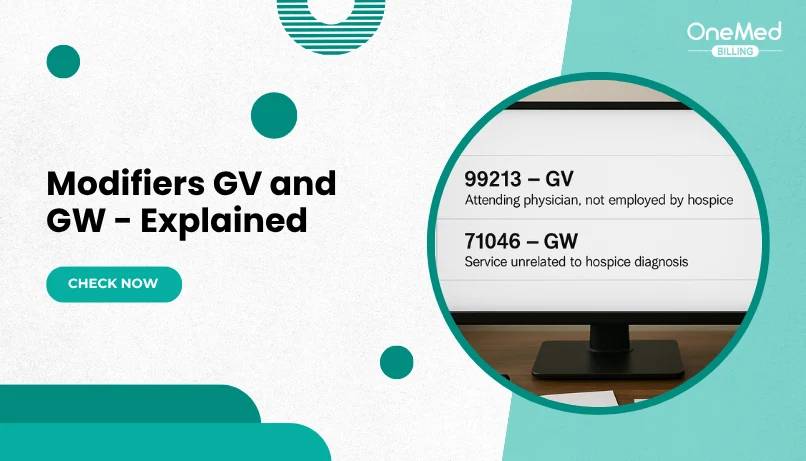Everything About Independent Physician Association (IPA)
- August 23, 2025
- 0 Comments
- Medical Billing
An Independent Physician Association (IPA) is a group of independent doctors who join together to negotiate contracts, share resources, and lower costs while keeping control of their own practices. IPAs give small practices the benefits of working like a larger group, such as better insurance rates and support with billing, compliance, and technology, without losing their independence.
Short Summary
An Independent Physician Association (IPA) is a network of independent doctors who work together to cut costs, share resources, and negotiate better contracts while keeping their practices independent. IPAs help with billing, compliance, and insurance relationships, giving small practices the strength of a larger group. They offer benefits like better reimbursement rates, reduced admin work, and improved patient care, but also bring challenges such as added responsibilities, tech gaps, and regulatory oversight.
Compared with HMOs, PPOs, and medical groups, IPAs allow more independence while still offering support. As healthcare moves toward value-based care, IPAs are expected to play an even bigger role in helping doctors stay competitive without losing autonomy.
How Does an IPA Work in Healthcare?
An IPA works as a bridge between independent doctors and insurance companies. Each doctor keeps control of their own practice but joins the IPA network to gain collective strength.
The IPA negotiates contracts with payers, manages fee schedules, and often provides tools like electronic health records, billing support, and compliance training. This helps doctors spend less time on administration and more time with patients.
Benefits of Joining an IPA
Joining an IPA allows independent doctors to remain in charge of their own practice while enjoying the advantages of working as part of a larger group. These benefits can make a big difference in both financial stability and patient care.
Better contracts with insurers
When negotiating alone, small practices often struggle to secure strong reimbursement rates. As part of an IPA, physicians negotiate collectively, giving them more leverage with insurers. This usually results in better payment terms and improved financial security.
Lower administrative burden
Running a practice means dealing with billing, compliance, credentialing, and endless paperwork. Many IPAs take over these tasks, which saves time and reduces stress for physicians. This lets doctors focus more on caring for patients rather than handling administration.
Access to shared resources
IPAs often provide access to tools that may be too expensive for solo practices to afford, such as advanced electronic health record systems, data analytics, and care management platforms. These resources improve efficiency and help practices keep up with changing healthcare requirements.
Improved patient care
By pooling resources, IPAs can offer extended clinic hours, preventive health programs, and better care coordination. Patients benefit from more accessible and consistent care, while providers gain the support needed to deliver higher-quality services.
Disadvantages of Independent Physician Associations
While IPAs offer many benefits, they are not without drawbacks. Physicians need to weigh these challenges carefully before deciding to join.
Balancing responsibilities
Being part of an IPA means a doctor still has to run their own practice while also fulfilling IPA obligations such as attending meetings, following network rules, or adjusting to group policies. This dual responsibility can add pressure and increase workload.
Technology challenges
Not all IPAs keep up with the latest healthcare technology. If an IPA is slow to adopt new electronic health records, telehealth tools, or data-sharing systems, it can limit efficiency and create frustration for practices that want to stay competitive.
Regulatory concerns
Because IPAs negotiate collectively with insurers, they are sometimes reviewed closely to ensure compliance with healthcare and antitrust laws. This can lead to added oversight, legal considerations, and in some cases, slower decision-making.
The Role of IPAs in Medical Billing and RCM
Independent Physician Associations (IPAs) play an important role in helping doctors manage the financial side of healthcare. They act as a support system that makes billing, claims, and reimbursements more efficient for independent practices. By centralizing claims management, IPAs reduce errors and improve submission accuracy. They also support contract negotiations with insurers, allowing members to secure better reimbursement rates than they could achieve on their own.
In addition, IPAs handle time-consuming tasks like credentialing and payer enrollment, which frees providers from a significant administrative burden. They also ensure that physicians remain compliant with regulations such as HIPAA, MACRA, and CMS requirements. Many IPAs use performance tracking tools and analytics to monitor revenue, identify problems in billing, and improve overall financial outcomes. In short, IPAs help independent providers focus on patient care while keeping their revenue cycle smooth and compliant.
Things to Consider Before Joining an IPA
Before joining an IPA, physicians should carefully review how the network operates. Important points to consider include:
- Legal structure and profit sharing: Understand how the IPA is set up legally and how revenue is distributed among members.
- Services included: Check what services are covered under membership, such as billing support, compliance assistance, or technology tools.
- Extra costs: Identify which services may require additional payments outside of standard membership.
- Membership dues and obligations: Review any regular payments, participation requirements, or commitments expected from members.
- Level of integration: Clarify how independent you can remain, since some IPAs require full alignment while others offer more flexibility.
- Rules and regulations: Make sure you understand the network’s policies to avoid conflicts and ensure it supports your practice goals.
IPA vs HMO vs PPO vs Medical Groups
Understanding how IPAs differ from other healthcare models helps providers and patients choose the right structure for their needs.
IPA (Independent Physician Association)
- A network of independent doctors who share resources and negotiate contracts together
- Doctors remain independent and manage their own practices
- Focused on reducing costs and improving care coordination
HMO (Health Maintenance Organization)
- Doctors are usually employed by the organization
- Patients must choose a primary care physician and stay within the HMO network
- Care is more controlled, with limited flexibility for providers and patients
PPO (Preferred Provider Organization)
- Offers more flexibility for patients to see specialists without referrals
- Patients can go outside the network, but at higher costs
- Less emphasis on coordinated care compared to IPAs and HMOs
Medical Groups
- Physicians practice together under one organization
- Compensation is typically salary plus productivity bonuses
- More centralized decision-making, which can limit independence but provides stability
|
Model |
How It Works |
Physician Independence |
Patient Flexibility |
Key Focus |
|
IPA (Independent Physician Association) |
Independent doctors form a network to share resources and negotiate contracts |
High, doctors keep control of their own practices |
Moderate Patients usually stay within the IPA network |
Cost control and care coordination |
|
HMO (Health Maintenance Organization) |
Doctors are employed by the organization; patients must choose a PCP |
Low, physicians are employees of the HMO |
Low, patients must stay within the HMO network |
Preventive care and lower costs |
|
PPO (Preferred Provider Organization) |
Network of preferred providers, but patients can go out-of-network at a higher cost |
Moderate, providers agree to payer rules but stay independent |
High, patients can see specialists without referrals |
Flexibility and wider access |
|
Medical Groups |
Physicians practice together under one organization with centralized decisions |
Low to Moderate, physicians work under group policies |
Moderate, depends on the group’s insurance contracts |
Stability and shared patient care |
The Role of IPAs in Insurance and Payer Relationships
One of the biggest strengths of an Independent Physician Association (IPA) is its ability to work with insurance companies on behalf of its members. By acting as a collective group, IPAs give independent doctors more influence than they would have negotiating alone.
Stronger negotiating power: IPAs bring together many physicians, which allows them to secure better reimbursement rates and contract terms from insurers.
Simplified credentialing and compliance: IPAs often handle credentialing, contract renewals, and insurance protocols, saving doctors valuable time and reducing delays in payments.
Support for value-based care: As insurers shift from fee-for-service to value-based models, IPAs help physicians track performance, manage reporting, and meet payer requirements more effectively.
Why Independent Doctors Continue to Play a Critical Role
Independent doctors bring something unique to healthcare that large hospital systems often cannot match. They usually spend more time building long-term relationships with patients, which leads to more personalized care. Because they are not bound by strict corporate policies or productivity quotas, they can make clinical decisions based purely on what is best for the patient.
Many independent physicians also serve in rural and underserved areas where larger systems may not operate. This helps close critical gaps in access to healthcare. By joining IPAs, these doctors gain the support they need to compete with bigger organizations while keeping their independence and patient-centered approach.
Future of IPAs
The future of Independent Physician Associations looks strong as healthcare continues to change. With rising costs and the push toward value-based care, IPAs give independent doctors the tools and support they need to stay competitive. By joining together, physicians can share resources, use advanced technology, and negotiate better contracts with insurers.
As payers demand more reporting and performance tracking, IPAs will likely take on an even bigger role in helping doctors meet these requirements without losing their independence. For many small and mid-sized practices, IPAs will remain an important way to balance autonomy with the advantages of being part of a larger network.
Conclusion
Independent Physician Associations are not a one-size-fits-all solution, but for many providers, they strike the right balance between independence and support. They give doctors stronger negotiating power, access to shared resources, and relief from administrative burdens, all while allowing them to run their own practices.
For physicians who value autonomy but still want the advantages of being part of a larger network, an IPA can be an excellent choice. The key is to carefully review the structure, contracts, and obligations before joining. With the right fit, an IPA can help doctors improve financial stability, stay compliant, and focus more on patient care.
Frequently Asked Questions
Find quick answers to common questions about this topic, explained simply and clearly.
What’s the difference between HMO and IPA?
An HMO employs doctors and controls care within its network, while an IPA is a group of independent doctors who stay self-employed but contract with insurers through the network.
What is IPA in medical insurance?
In medical insurance, an IPA is a network of independent physicians that contracts with health plans to provide care at negotiated rates.
What is the full form of IPA?
IPA stands for Independent Physician Association.
What is an example of an IPA in healthcare?
An example is Heritage Provider Network in California, which brings together thousands of independent physicians to negotiate contracts and coordinate care.







Comments (0)